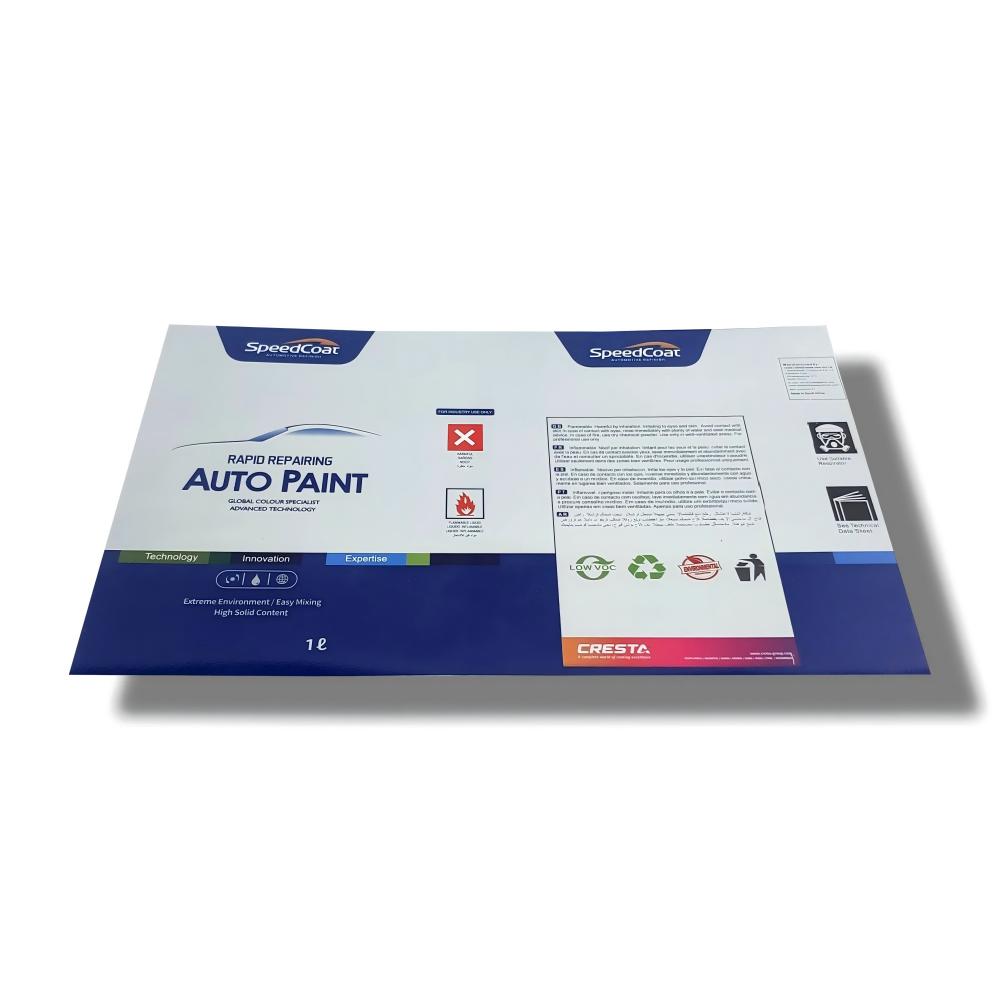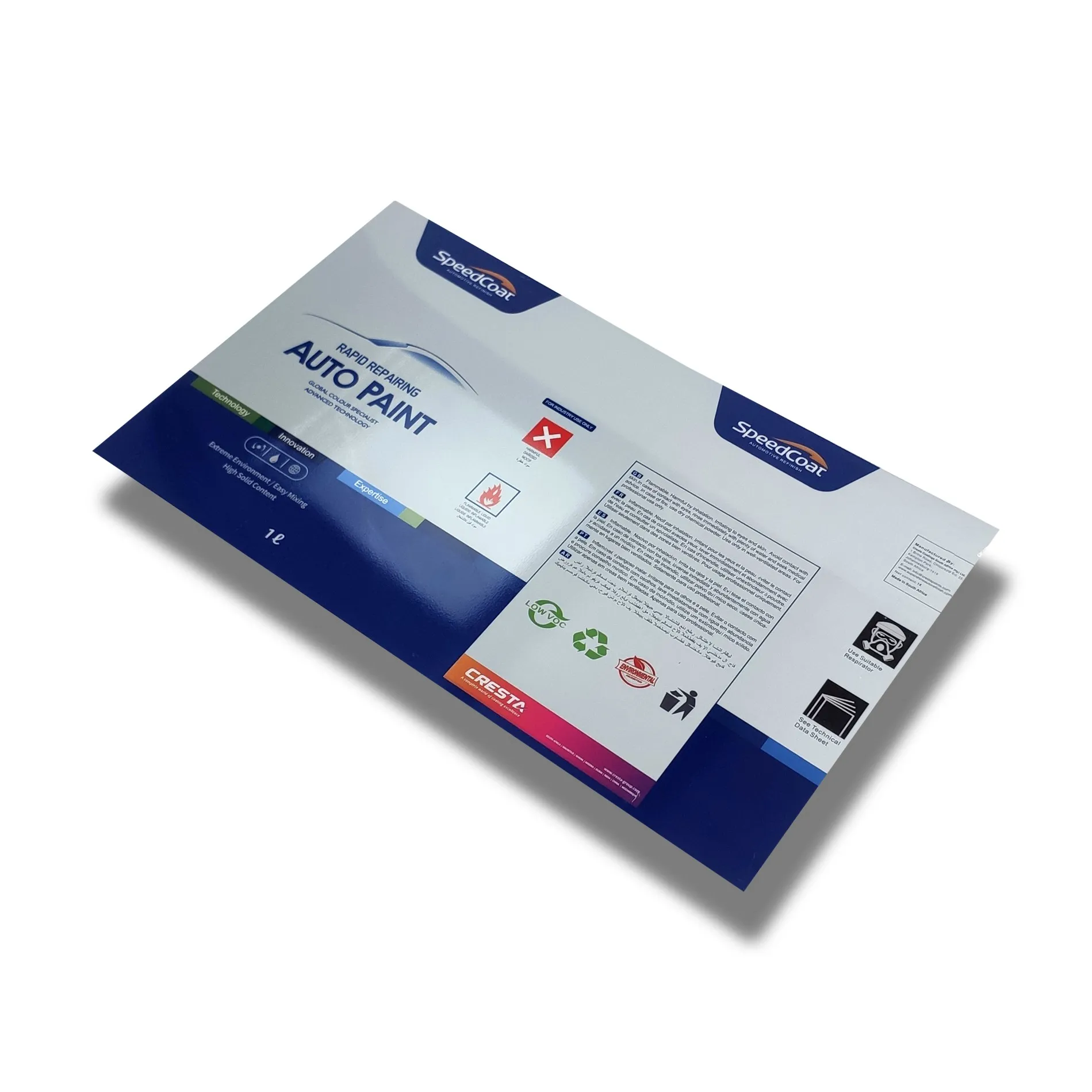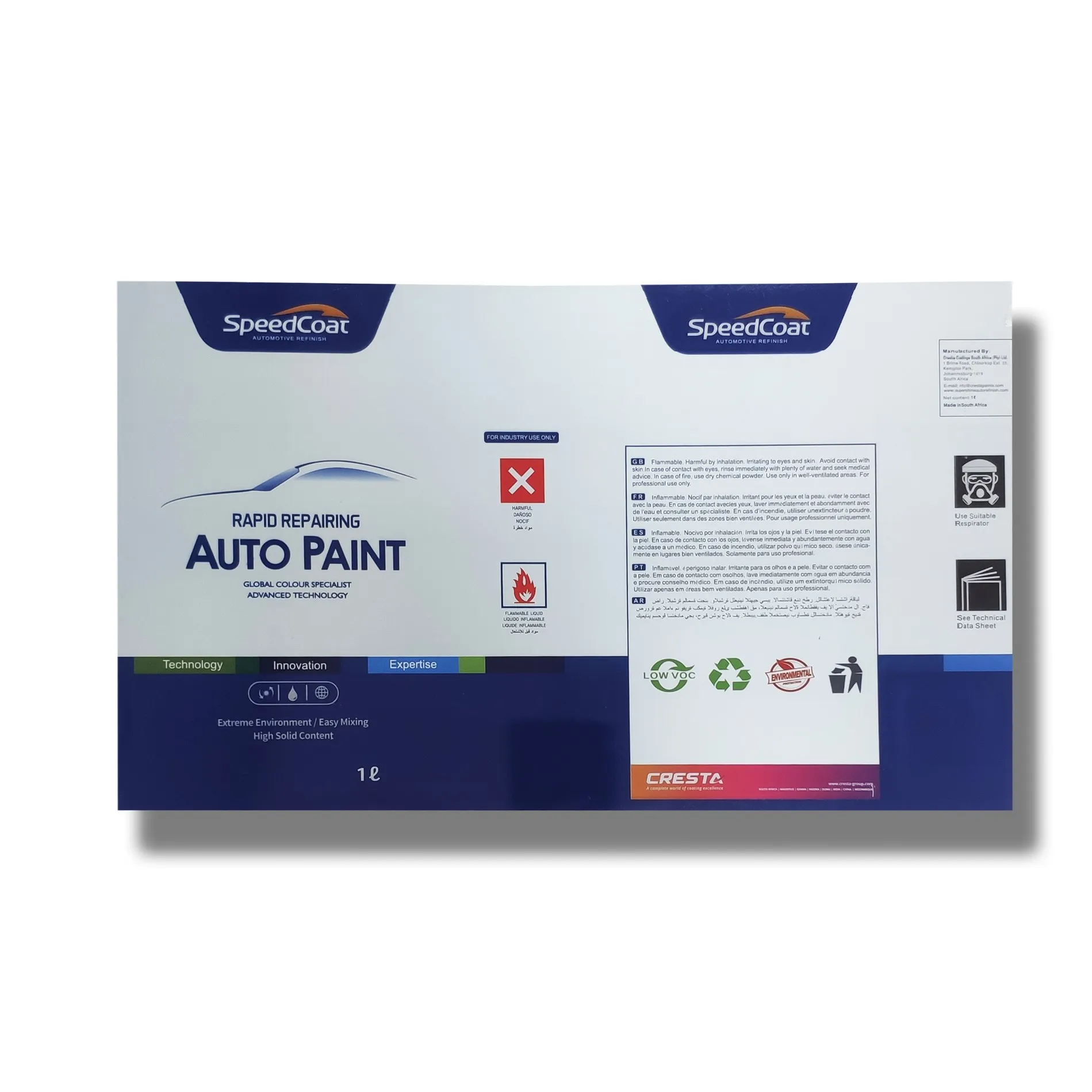In the modern packaging industry, tinplate, as an important packaging material, is widely used in food, beverage, chemical and other fields. Printing tinplate is to give product packaging an aesthetic appearance while conveying information and brand image. However, the printing of tinplate is different from other materials (such as paper or plastic) and involves special process and technical requirements.
This article will focus on the theme of "What should be paid attention to when printing tinplate sheet" and systematically explain the key details and process points that need to be paid attention to during the printing process.

What are the printing requirements for tinplate?
Before discussing the printing process, we must first understand the material properties of tinplate. Tinplate is a composite material made of tin-plated low-carbon steel plate. It has the strength and toughness of metal, and the tin layer covering the surface provides good corrosion resistance. These characteristics make tinplate an excellent packaging material, but its metal texture and surface smoothness pose special challenges to the printing process.
Unlike traditional printing materials, tinplate has a smooth surface and strong reflectivity, which makes it difficult for ink to adhere and dry. In addition, tinplate is often used to package products such as cans, bottle caps and cosmetic boxes. The appearance of these products requires exquisiteness and durability. Therefore, when printing, not only the accuracy of color and pattern should be considered, but also the wear resistance, corrosion resistance and good adhesion of the ink should be guaranteed.
What should be paid attention to when printing tinplate?
1. Surface treatment before printing tinplate
1.1 Cleaning treatment
1.2 Primer coating
2. Printing process selection and ink application
2.1 Screen printing
2.2 Offset printing (lithography)
2.3 Digital printing
3. Select ink suitable for printing tinplate
3.1 Adhesion of ink
3.2 Corrosion resistance of ink
3.3 Heat resistance and baking process of ink
4. Surface treatment and protection after printing
4.1 Transparent coating
4.2 Varnish coating

Surface treatment before printing tinplate
In order to ensure the printing effect, tinplate needs to undergo a series of surface treatment processes before printing. These treatment steps are crucial because they directly affect the adhesion of the ink and the quality of the printed pattern.
Cleaning treatment
Before printing, the tinplate surface must be kept clean. Tin-plated metal surfaces are prone to grease, dust or other impurities, which will hinder the uniform coverage of ink. Cleaning steps usually include mechanical cleaning, chemical cleaning and electrolytic cleaning to ensure that there are no contaminants on the tinplate surface.
The chemical solvents used in the cleaning process should be non-residual and non-corrosive to avoid damage to the tinplate surface. At the same time, drying should be carried out immediately after cleaning to prevent water vapor or dust in the air from contaminating the surface again.
Primer coating
Primer coating is an important step in printing tinplate sheet, which aims to improve the adhesion and uniformity of ink. Due to the smooth surface of tinplate, direct printing may make it difficult for the ink to adhere firmly. Primer coating can form an adhesion interface between tinplate and ink to enhance the printing effect.
Common primer materials include epoxy resin, polyester resin and acrylic resin, which can provide good adhesion and can withstand high temperature baking. When applying primer, it is necessary to ensure the uniformity and moderate thickness of the coating. Too thick will affect the printing effect, and too thin will make it difficult to achieve the ideal adhesion effect.
Printing process selection and ink application
The printing process of tinplate is different from that of common materials such as paper and plastic. Due to the characteristics of its metal surface, the selection of printing process and the application of ink become key factors in determining the printing quality.
Screen printing
Screen printing is a commonly used process in tinplate printing, suitable for mass printing and the production of complex patterns. Screen printing transfers ink to the tinplate surface through the mesh, which is suitable for printing thicker patterns and designs with distinct colors.
The advantages of screen printing are thicker ink layers, bright colors and good wear resistance. However, due to the thicker ink and longer drying time, it needs to be baked or cured in time after printing.
Offset printing (lithography)
Offset printing is an efficient flat printing process, which is often used for tinplate products with high printing precision requirements. Offset printing transfers ink to the printing plate through the printing roller, and then transfers it from the printing plate to the tinplate surface. Since offset printing can achieve delicate color transitions and pattern details, it is suitable for printing that requires high-resolution images.
The ink of offset printing is thinner and can dry quickly, so the production efficiency is higher. However, offset printing has high requirements for primer, and the uniformity and adhesion of the primer coating must be guaranteed to avoid problems such as ink flying or color bleeding during the printing process.
Digital printing
In recent years, with the development of digital printing technology, digital printing has gradually been applied to tinplate printing. Digital printing can achieve flexible customization and is suitable for small batch and diversified production needs.
The advantage of digital printing is that it does not require plate making, can quickly respond to different printing design requirements, and can print patterns directly on the tinplate surface. However, the ink layer of digital printing is thin and has relatively low wear resistance, so it is usually necessary to perform surface protection treatment after printing, such as adding a transparent protective film or coating.
Choose ink suitable for printing tinplate
When printing tinplate sheet, the choice of ink is a key factor affecting printing quality and product durability. The ink must not only have good adhesion, but also have characteristics such as corrosion resistance, high temperature resistance and wear resistance.
Adhesion of ink
The surface of tinplate is smooth and the adhesion of ink is poor, so special metal printing ink must be selected before printing. This type of ink usually contains special adhesives that can bond well with the primer and metal surface to ensure the stability of the ink layer.
In addition, the drying speed of the ink is also a factor that needs to be considered. Inks that dry too slowly are prone to adhesion or blurred patterns during subsequent processing, while inks that dry too quickly may cause uneven printing. Therefore, it is necessary to comprehensively consider the material properties and printing process when selecting inks.
Corrosion resistance of inks
Tinplate is often used in the packaging of food, beverages and chemical products, which have high requirements for the safety and corrosion resistance of packaging materials. Therefore, printing inks must have good corrosion resistance and be able to maintain the stability of color and pattern in high humidity and high acid and alkali environments.
Corrosion-resistant inks usually contain polymer materials or special additives that can form a solid protective layer after drying to prevent the ink from being eroded by chemicals. During the printing process, it is necessary to ensure that the ink layer is evenly distributed and fully cured to achieve the best protection effect.
Heat resistance and baking process of inks
During the process of printing tinplate sheet, the drying of ink usually needs to be completed by baking. Since the surface of tinplate is smooth and the ink is difficult to dry naturally, the baking process becomes an important step to ensure the stability of the ink layer.
The baking temperature is usually controlled between 140°C and 210°C. The specific temperature and time will vary depending on the type and thickness of the ink. During the baking process, it is necessary to ensure the uniformity of the temperature to avoid local overheating that causes ink discoloration or pattern distortion.
High temperature resistant ink is usually used in printing processes that require baking and curing. It can maintain the vividness of the color and the integrity of the pattern under high temperature conditions. Therefore, when printing tinplate, ink suitable for high temperature baking should be selected, and reasonable baking parameters should be set according to the specific printing process.
Surface treatment and protection after printing
After printing, the surface of tinplate usually needs additional protection treatment to improve the durability and aesthetics of the pattern. These treatment processes can not only increase the wear resistance of the pattern, but also enhance the corrosion resistance of tinplate.
Clear coating
Clear coating is a common surface treatment method after printing tinplate. The main function of the transparent coating is to provide a protective film for the printed pattern to prevent the pattern from being worn or scratched during subsequent stamping, shearing or transportation.
Transparent coating usually uses polyester, acrylic or epoxy resin materials. After coating, it can form a smooth and transparent protective film, which can not only enhance the protective performance of the surface, but also does not affect the color and gloss of the pattern.
Apply varnish
The varnish treatment is to increase the glossiness of the tinplate surface and make the printed pattern more bright and shiny. The varnish can be evenly applied to the tinplate surface by rolling, spraying, etc., and a bright coating is formed after high-temperature baking.
Varnish can not only enhance the visual effect of the product, but also provide tinplate with certain wear resistance and waterproof properties. Therefore, in high-demand applications such as food packaging and cosmetics packaging, varnish treatment is a common way to improve the grade of products.

What are the common problems in the printing process?
In the process of printing tinplate sheet, some common problems may be encountered, such as poor ink adhesion, uneven color, blurred pattern, etc. Here are some common problems and their solutions:
Poor ink adhesion
Poor ink adhesion is a common problem in tinplate printing, usually caused by uneven primer or surface contamination. The solution is to ensure that the tinplate is fully cleaned before printing and choose the appropriate primer material and coating method.
Uneven color
Uneven color can be caused by uneven ink thickness, insufficient printing pressure or plate wear. To solve this problem, you can check the status of the plate and ensure that the parameters of the printing equipment are set correctly.
Blurred pattern
Blurred pattern is usually caused by incomplete ink drying or uneven baking temperature. To avoid this problem, the baking temperature and time should be set reasonably according to the characteristics of the ink to ensure that the ink layer is fully cured.

